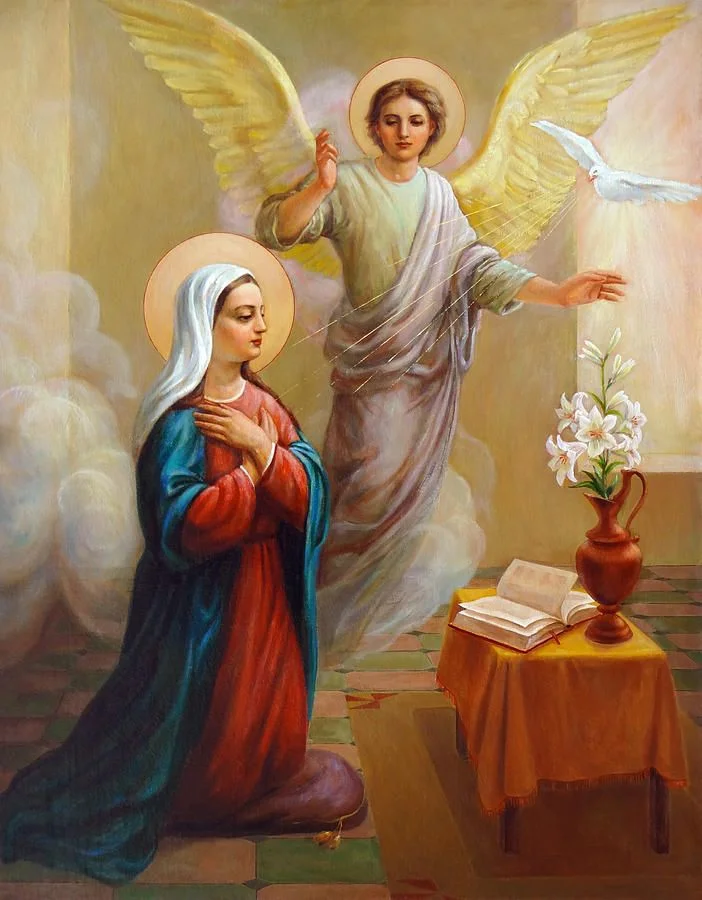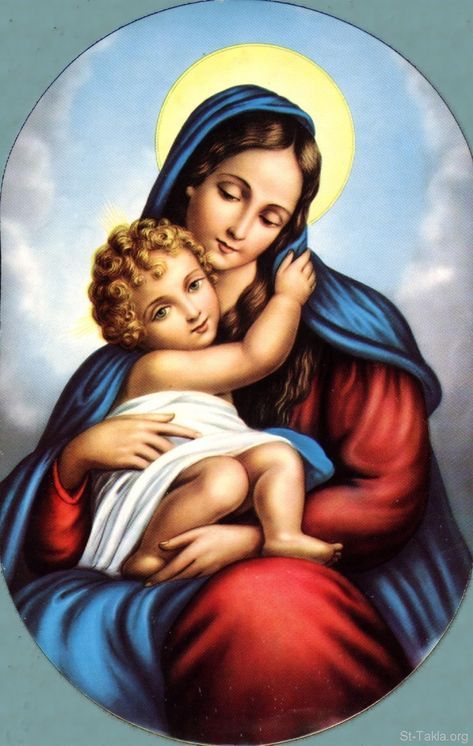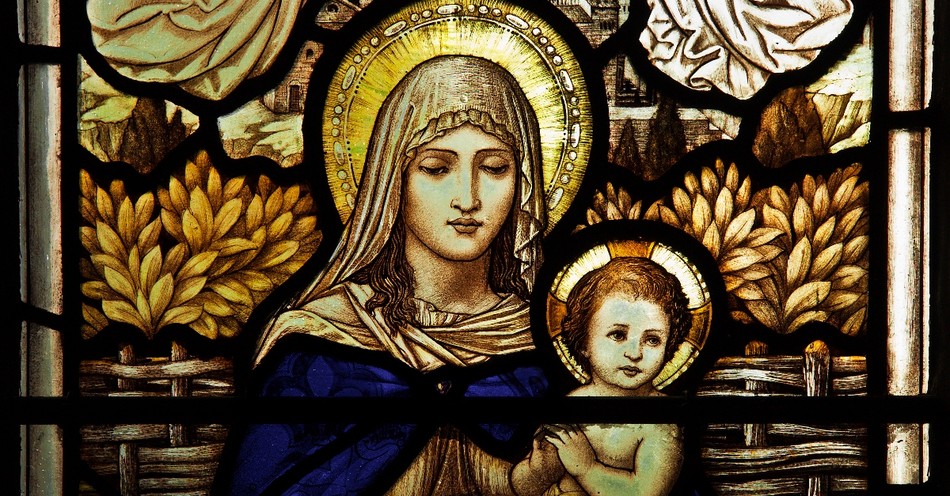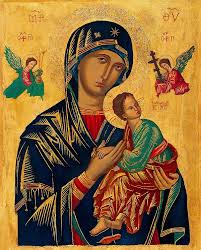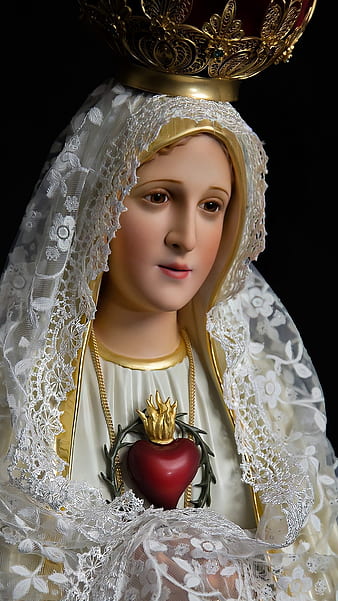Mary's Immaculate Heart: A Refuge in Troubled Times

Updated at: 2023-08-05 13:19:52 (2 years ago by Melkisedeck Leon Shine)
Mary's Immaculate Heart: A Refuge in Troubled Times 💖🙏
In times of trouble and uncertainty, we often look for solace and comfort. As Christians, we are blessed to have a refuge in the loving heart of the Virgin Mary, the Mother of God. Her Immaculate Heart is a source of hope, peace, and strength amidst the storms of life. Let us explore the significance of Mary's Immaculate Heart and how it can provide solace in troubled times.
-
The Immaculate Conception: The dogma of the Immaculate Conception teaches us that from the moment of her conception, Mary was preserved from the stain of original sin. This unique privilege made her heart pure, untainted, and filled with divine grace. 🌟
-
Mother of God: Mary's role as the Mother of God is unparalleled. She carried our Savior, Jesus Christ, in her womb and nurtured Him with boundless love. Her heart was the first to witness the miracle of God made flesh. 🌹💙
-
Mary's Fiat: In the Gospel of Luke, we see Mary's humble and obedient response to God's plan. She said, "Behold, I am the handmaid of the Lord; let it be to me according to your word" (Luke 1:38). Mary's wholehearted "yes" to God's will is an inspiration for us to trust in His plans and surrender to His divine providence. 🌺
-
Our Intercessor: Mary's Immaculate Heart is a powerful intercessor before the throne of God. Just as she interceded for the couple at the wedding in Cana (John 2:1-11), she intercedes for us as well. Her prayers are filled with motherly love and are a source of great comfort and consolation. 🙏🌈
-
Mediatrix of Grace: Mary, as the Mediatrix of all graces, channels the abundant graces of God to His children. Through her Immaculate Heart, she dispenses these graces and helps us grow in holiness. 🌟💧
-
Our Mother: On the cross, Jesus entrusted His beloved disciple John to the care of His mother, saying, "Woman, behold your son!" (John 19:26). In this gesture, Jesus also entrusted us to Mary's maternal care. Her Immaculate Heart is a refuge for all who seek her motherly love and protection. 🌺💖
-
In Times of Persecution: Throughout history, Christians have faced persecution for their faith. In these troubled times, Mary's Immaculate Heart offers us strength and courage. Just as she stood at the foot of the cross, unwavering in her love for her Son, she stands by our side, comforting us and giving us the strength to endure. 🌹🌟
-
The Rosary: The Rosary, a powerful devotion to Mary, is a way to enter into the contemplation of Mary's Immaculate Heart. Through its repetition, we meditate on the life of Jesus and Mary, drawing closer to their hearts. The Rosary is a spiritual weapon that brings peace and protection in troubled times. 📿🙏
-
Trust in Mary's Intercession: The Catechism of the Catholic Church teaches us that Mary's intercession "is efficacious in obtaining the grace of conversion and repentance" (CCC 2677). When we entrust our troubles to her Immaculate Heart, we invite her to intercede for us before God's throne and obtain the graces we need. 🌹🌈
-
Saints Devoted to Mary: Throughout the centuries, many saints have testified to the power and love radiating from Mary's Immaculate Heart. Saint Maximilian Kolbe, for example, had an ardent devotion to Mary and saw her as a sure refuge in times of distress. Their example encourages us to seek solace in her loving heart. 🌺💖
-
The Hail Mary: The Hail Mary is a beautiful prayer that honors Mary and seeks her intercession. It echoes the words of the angel Gabriel and Elizabeth, proclaiming Mary as blessed among women. By praying the Hail Mary, we express our love and trust in her Immaculate Heart. 🙏💙
-
The Miraculous Medal: The Miraculous Medal, also known as the Medal of the Immaculate Conception, is a tangible reminder of Mary's intercession. Blessed by the Church, it serves as a sacramental that invites her protection and graces into our lives. Wearing or holding this medal can bring comfort and peace. 🔴🏅
-
The Brown Scapular: The Brown Scapular is another powerful sacramental associated with Mary's Immaculate Heart. It is a sign of our consecration to her and a reminder of her motherly protection. By wearing the Brown Scapular, we invite Mary to envelop us in her love and shield us from harm. 🌹🔥
-
Trusting in God's Plan: Mary's Immaculate Heart reminds us to trust in God's plan, even when it seems difficult or challenging. She teaches us that by surrendering our lives to Him, we can find peace and joy amidst the trials of life. 🌺💖
-
Opinion: In times of trouble and uncertainty, turning to Mary's Immaculate Heart can provide us with a sense of peace, comfort, and hope. Her unwavering love and intercession can bring solace to our troubled hearts. Have you experienced the refuge of Mary's Immaculate Heart? Share your thoughts and experiences below. 💗🙏


